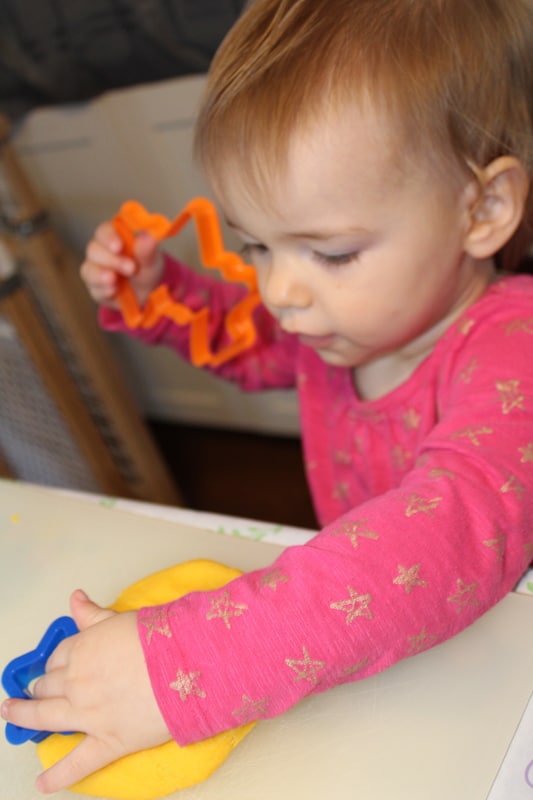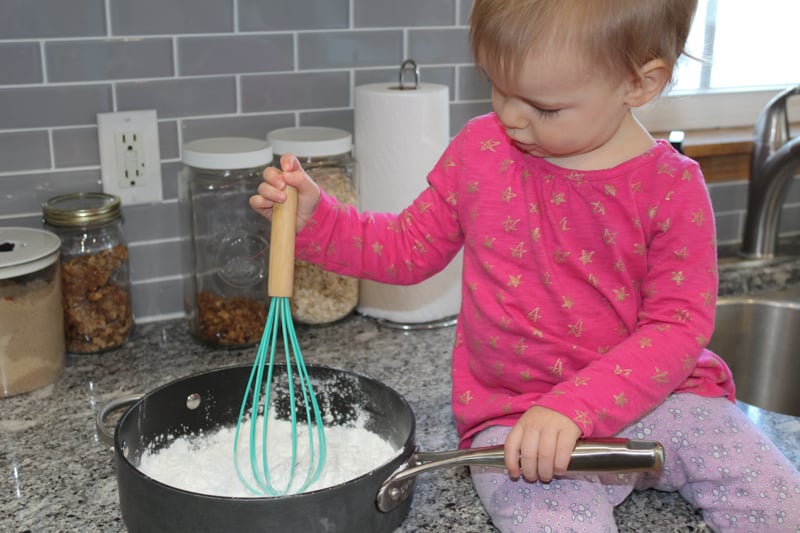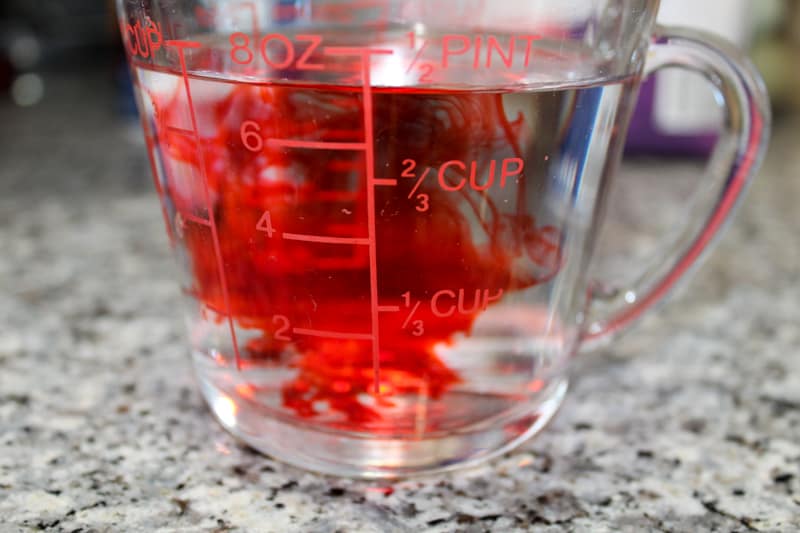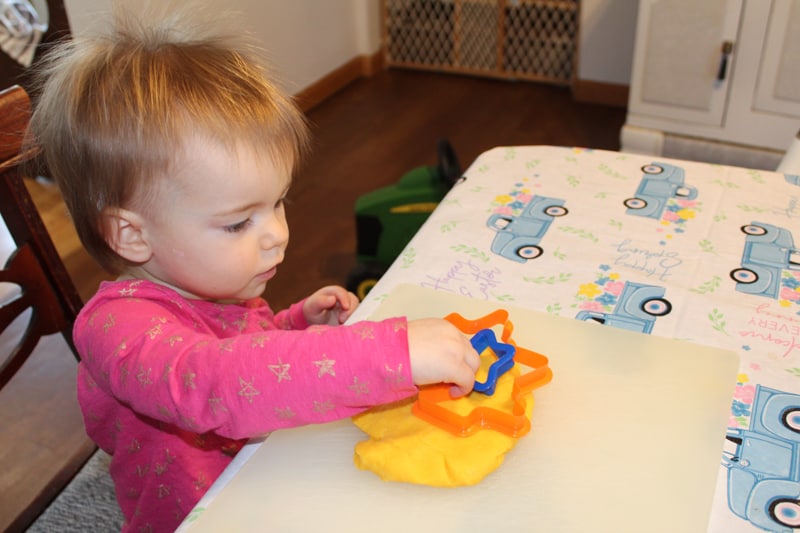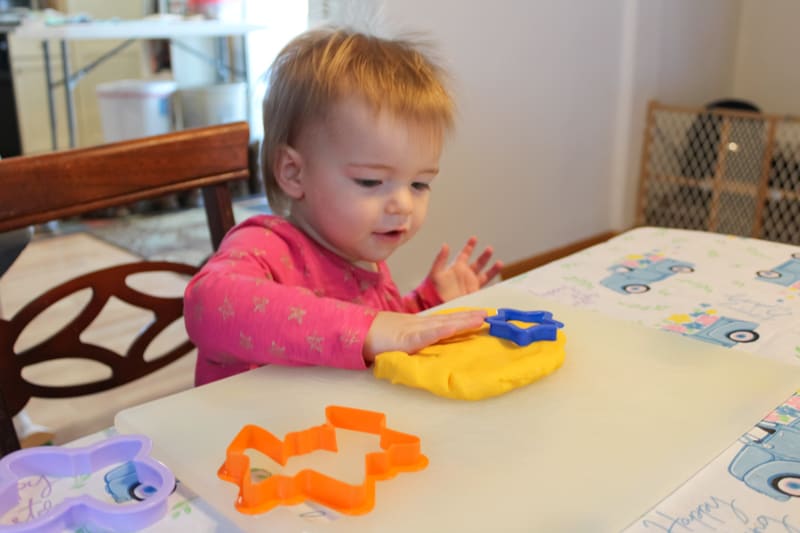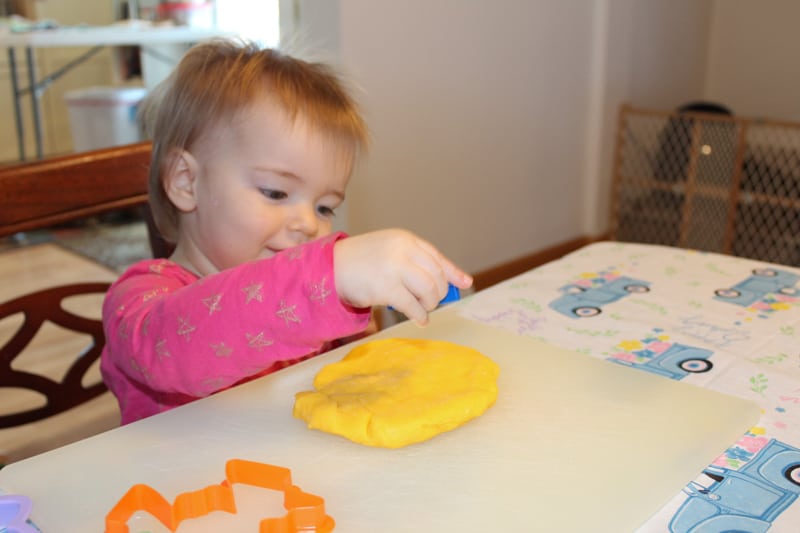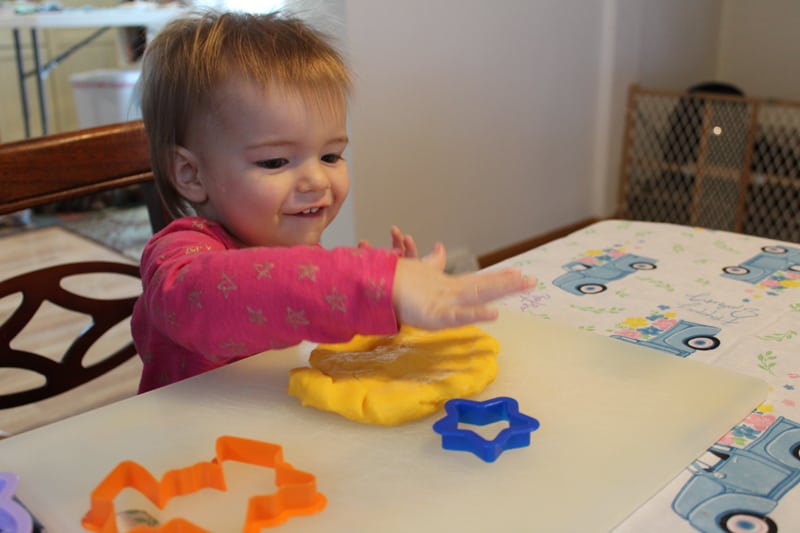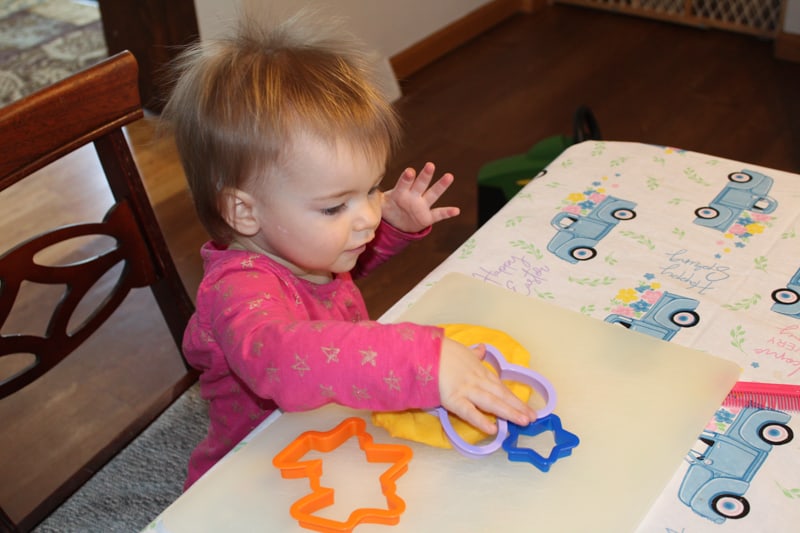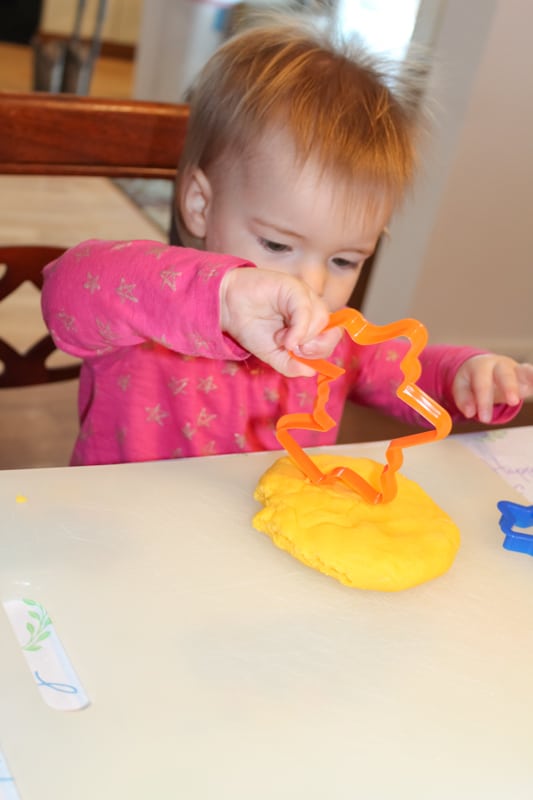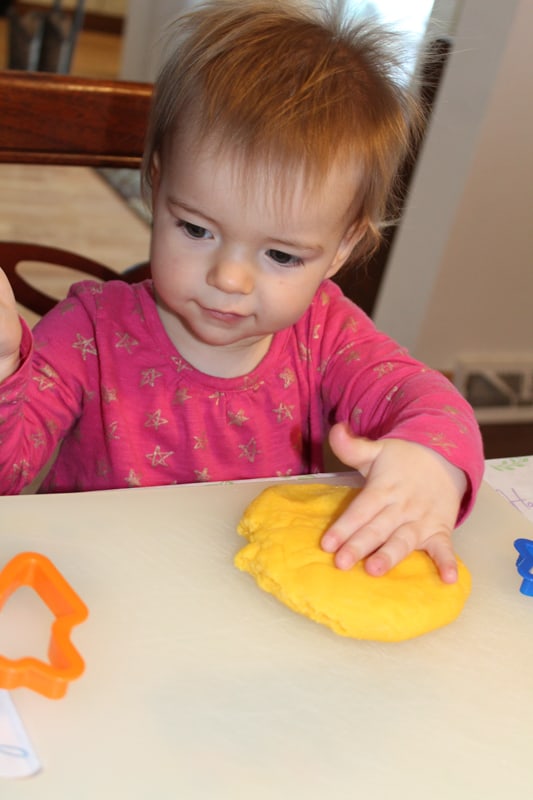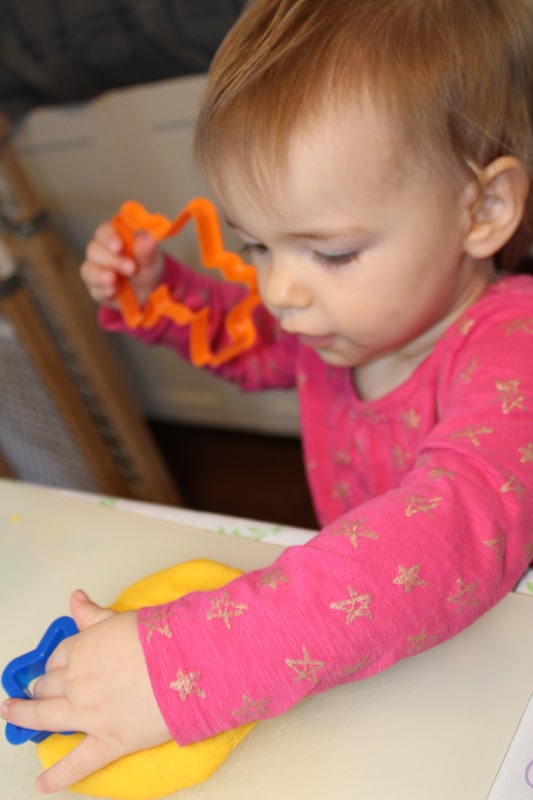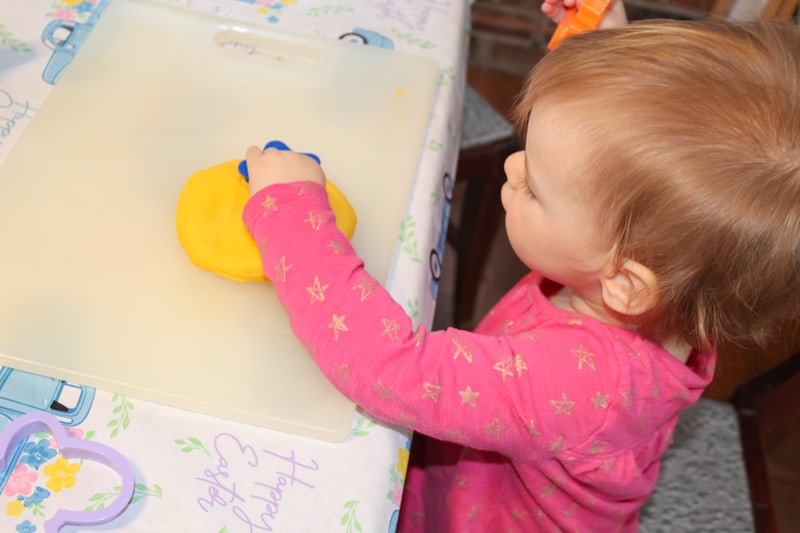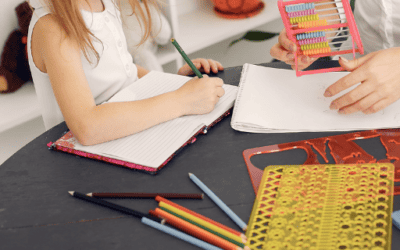This gluten free playdoh recipe is an adaption of my children’s great-grandmother’s calming, homemade playdoh recipe. She used something unexpected to calm her children, my grandparents. With a few simple changes, I was able to convert her recipe into a celiac-safe playdoh.
One unexpected ingrediant is essential oil. Learn about the surprising benefits of essential oils to meet your needs.
Interesting tip, playing with playdoh strengthens fingers. Even more interesting, patting, rolling, and pushing playdoh calms the sensory system. In fact, any pressure against the hands literally calms the sensory system. In milliseconds, your child is learning how much pressure to apply to make that playdoh pancake flat. Additionally, playdoh is therapeutic play for the child with an over-reactive, hyper-sensory system.
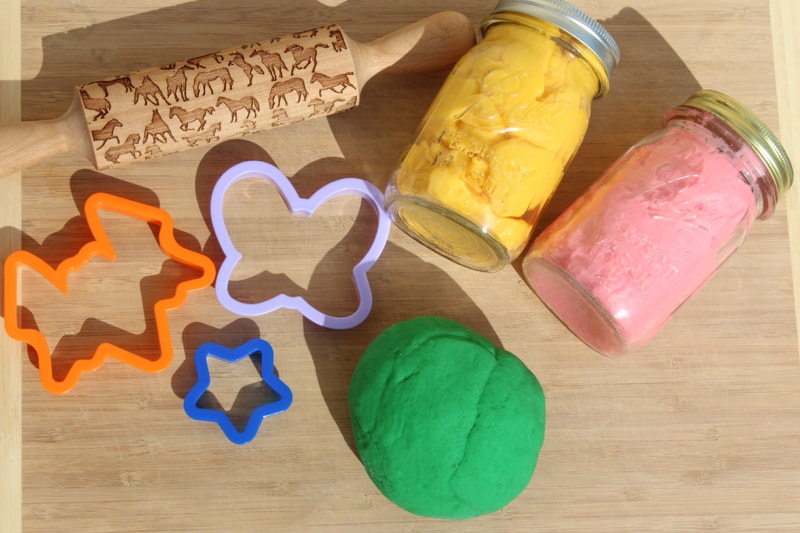
Gluten Free Playdoh Ingredients
- 1 Cup of all-purpose gluten free flour
- 1/2 Cup of cornstarch
- 1 Tsp of cream of tartar
- 1/2 Cup of salt
- 1 1/2 TBSP of olive oil
- 1 Cup of water
- Food dye or natural dye like essential oils
How to Make Gluten Free Playdoh
- First, pour 1 cup of water and 1 1/2 TBSP of olive oil into a saucepan. Then, heat over medium heat until you start to see bubbles as it simmers.
- In a separate bowl, combine the 1 cup of flour, 1/2 cup of cornstarch, 1 tsp of cream of tartar, and 1/2 cup of salt. Now, stir ingredients together.
- In the saucepan, add the food dye or essential oil to the water. Then, turn heat down to low and stir.
- Now, pour the dry ingredients into the saucepan. Using a wooden spoon or spatula, mix until you no longer see the liquid. When you see the dough start to form a ball, pull pan off the burner and mix a few more minutes.
- Quickly, transfer the dough to a clean countertop or cutting board. Then, knead dough until it feels cool. If your dough is sticky, transfer it back to the pan and cook it for another minute or two. If you stop kneading the dough too soon, it will develop a crusty surface.
- Option, you can lay the dough in a ball on a play. Every few minutes, knead the dough. When it feels cool while kneading, put it back on the plate for a few more minutes. Even better, let the play begin.
- When done playing, always store playdoh in an airtight container.
Notes:
- Caution, avoid sealing warm dough in a container. Condensation will make it sticky. Left undetected, the dough quickly spoils.
- Also, make sure your child’s hands are clean and the playing surface. Otherwise, the dough will spoil.
Natural Dyes
If you are sensitive to food coloring, essential oils are a great alternative. This is great-grandmother’s calming secret. I share a fun game for all ages to help you choose a scent. Of course, you can choose to have playdoh that smells like salt. Interestingly, the color tones of essential oils are muted, beautiful pastel balls of playdoh. Generally, it takes 15-20 drops of the essential oil for this size batch of playdoh. By adding the oil to the wet ingredients, it saves you a lot of kneading time.
Essential Oil Color Ideas for Gluten Free Playdoh:
Essential Oil:
- Peppermint
- Wild Orange
- Lemon
- Lime
- Lavender
Color:
- Red
- Orange
- Yellow
- Light Green
- Purple
Beneficial Effects:
- Invigorating, mental clarity
- Uplifting, energizing
- Focus, clarity
- Uplifting, energizing
- Calming
Calming Benefits of Gluten Free Playdoh
1. Sensory Feedback
Playing with gluten free playdoh is a fantastic, calming sensory activity. Children who seek sensory feedback can safely squish, pound, and mold the playdoh. Meanwhile, the playdoh is giving their proprioceptive system, feedback calming your child. In contrast, the child who has an under-active sensory system benefits from sensory stimulation. A hint, laughter indicates a child is calm. Calm does not have to mean quiet, sleepy. You can challenge them by increasing the level of sensory feedback by providing them with cookie cutters, rolling pins, or toys. For the older child, use clay to create a masterpiece. Be creative! For example, hide a small toy inside a ball of dough that they have to dig and search for to uncover.
2. Fine Motor Skills
Cutting, poking, and prodding gluten free playdoh improves hand-eye coordination which is controlled by the vestibular system. Rolling and squishing the dough helps to strengthen the muscles in the figures and hands that are used for writing. Below are a few fine motor playdoh activities.
Fine Motor Gluten Free Playdoh Activities:
- Create a playdoh sausage. First, roll the dough out on the table. Then, cut it with scissors or slice it with a butter knife into smaller pieces.
- Create a bowl by rolling the playdoh into a ball. Next, squish the thumb into the center of the ball. Lastly, use the middle and index fingers to squeeze and flatten the outside edge of the bowl.
- An extra hard challenge, roll dough into a small ball using only the index, middle finger, and thumb. Give lots of encouragement and praise.
- When safe, use toothpicks to add details.
- If your child loves cars, create a playdoh racetrack. Then, use a play car or a toy pizza cutter to make tracks.
3. Bilateral Coordination
Bilateral coordination is the use of both sides of the body, at the same time, in mirroring motions or alternating motions. Playing with playdoh is a proprioceptive, vestibular activity that provides a perfect opportunity to strengthen bilateral coordination. Fun idea, challenge participants to use both hands at the same time. Below are a few bilateral coordination ideas:
Bilateral Coordination Gluten Free Playdoh Activities:
- Pound the dough with both hands in rhythm or an alternating rhythm.
- Squish a mound of dough at the same time with each hand.
- Roll the dough into a ball while holding the dough between hands.
- Roll the dough into sausages or worms while holding the dough between hands.

